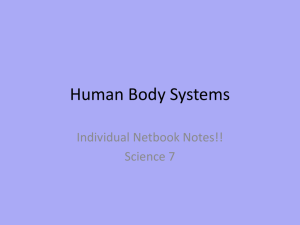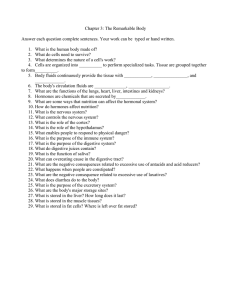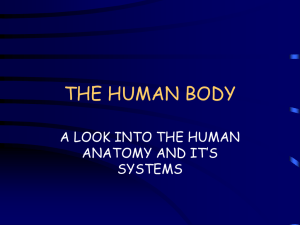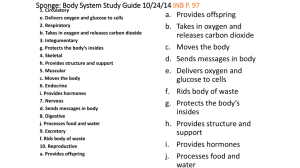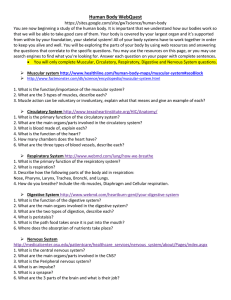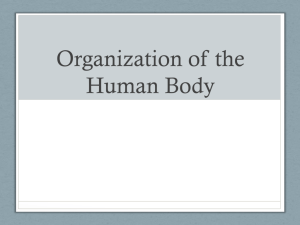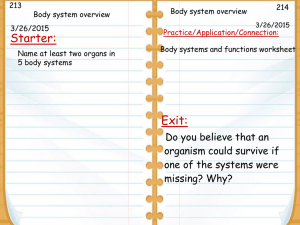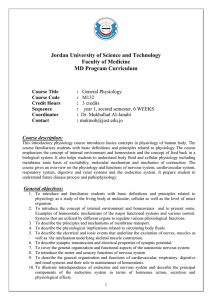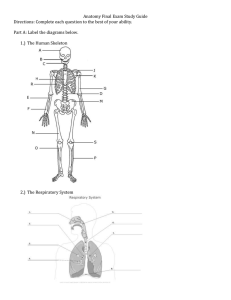Claudia´s digital book
advertisement
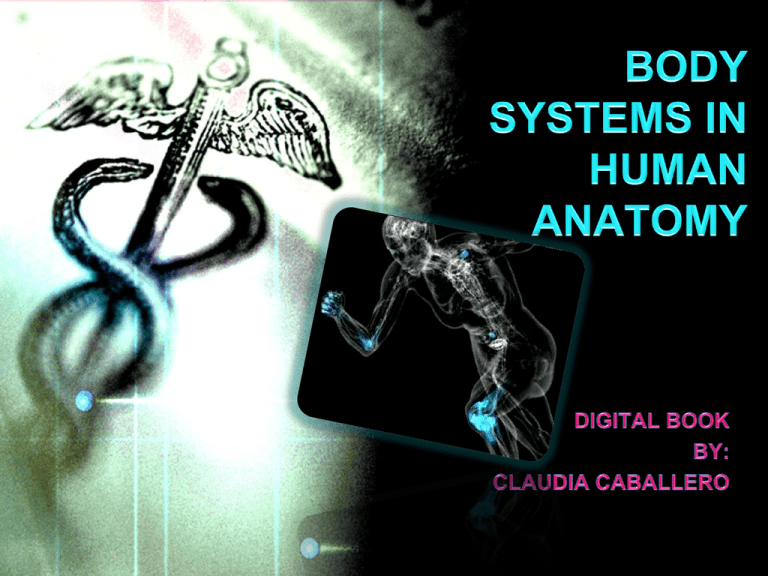
11. 2 3 4 Skeletal System Functions of the Skeletal System RELATIONSHIP TO OTHER SYSTEMS Nervous System Control Regulate Communicate Center of mental activity: Learning memory. Homeostasis. Transport: Protection: Regulation: Oxygen from the lungs to the various cells of the body. The body and its organs from infection and diseases. Temperature, pH, concentration. Fluid Debris Dead blood cells Remove : Pathogens Cancer cells Toxins The lymph system collects and transports. • Collection of fluids begins at the capillaries of the circulatory system • The fluid directed through a series of vessels that become the thoracic duct. • The lymph fluid moves through the vessels as you move the voluntary muscles in your body. Secrete different Secret chemical Maintain a stable environment Promoting changes of the body. Regulate: Mood Growth and development Tissue function Metabolism Sexual function Reproductive processes. Works with the nervous system by: Sending hormones to cells Having a reaction Works with the digestive system with the pancreas: Producing insulin. The urinary system because it works with: Water absorption in the kidneys Digestive System Parts Function Interconnections STRUCTURES FOUND WITHIN THE SYSTEM Menu FUNCTIONS OF THE DIGESTIVE SYSTEM Absorbs water Converts food so it can be used by cells Break down the food we eat into smaller parts Eliminates waste water Transfers nutrients to the body Provide energy Stores and digests foods Menu Menu Female: Male: Produce hormones. Produce sperm Produce and sustain the ova. Maintain seminal fluid Transport the eggs to the Fallopian tube for fertilization with the sperm. Transport sperm The endocrine system sends hormonal messages The circulatory system sends blood. The skeletal system sends nutrients such as calcium and magnesium to the fetus The nervous system produces stimulus.
